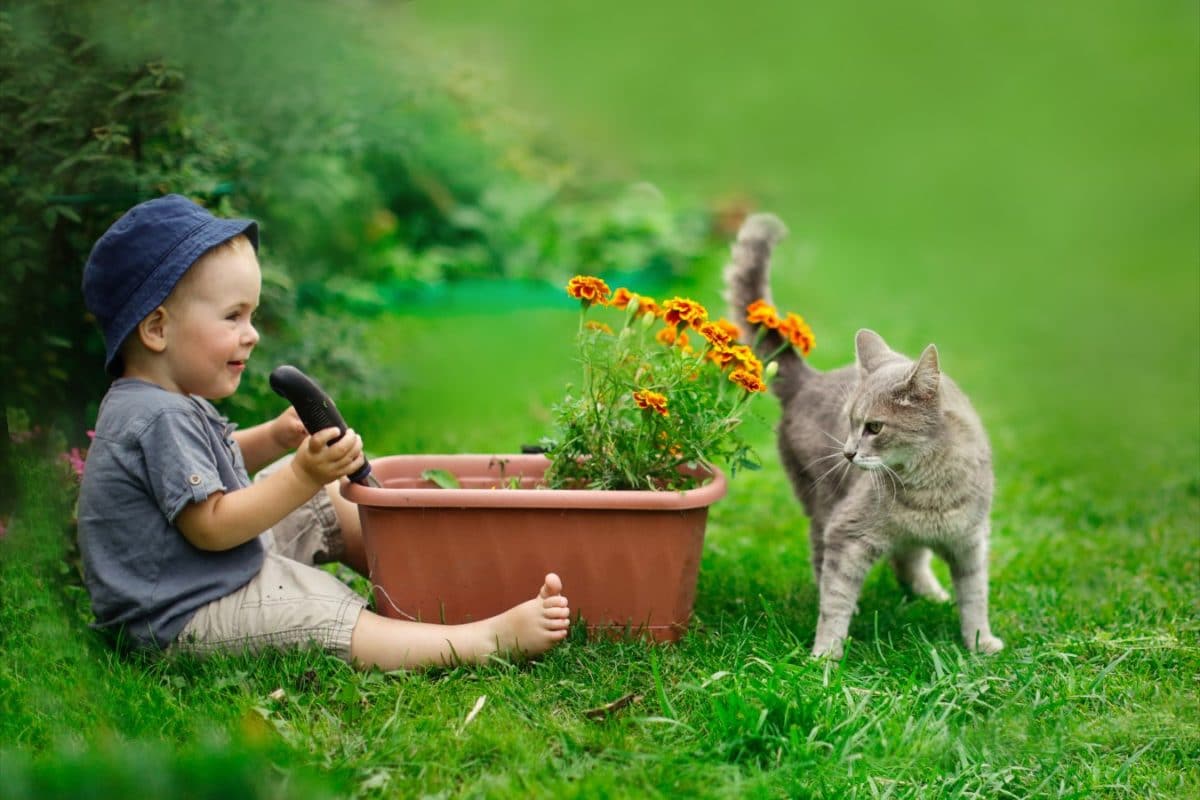Cats and gardens go together like…well, it depends on who the garden is for. To cats, gardens are a little piece of heaven. Fresh soil makes a perfect litter box, and seedlings that get uprooted in the digging process are of no consequence to them. You may not want your cat in your garden, and if the cats in your garden aren’t your cats, you probably like having them there even less. The solution? Make your garden unattractive to cats, and give them a garden of their own.
A garden not for cats
You can build a fence around your garden, but cats can climb over most fences. Spraying water at cats usually (but not always) sends them in the opposite direction, but it works only when you’re there with hose in hand. Motion-activated sprinklers like the Contech Scarecrow go into action when people as well as animals approach the garden.
Mothballs in the garden may deter cats, but they contain pesticides. At high levels, mothballs have been known to cause liver and kidney tumors in animals. Both paradichlorobenzene and naphthalene, the active ingredients, may be linked to
cancer in cats and dogs. Another problem is that children may mistake mothballs for candy and play with them, or ingest them.
Safer cat-deterrent garden strategies:
- Grow plants that cats don’t like the odor or texture of
- Sprinkle substances in the garden that deter cats like Repel II Dog and Cat repellent
- Put objects in the garden bed that make it unappealing for cats to dig or sit
Some plants may also be toxic to animals. Information on what to do if you suspect poisoning can be found in our article on
Pet poisoning prevention.
Websites and discussion forums about gardens and cats have lists of methods that people have found successful. You might not want to grow, sprinkle, or see all of these in your garden, and not all cats are repelled by all the items listed below. Citrus scents in particular deter only some cats. Repel II Cat & Dog repellent granules, on the other hand, is effective as well as cheap and attractive. A combination of techniques produces the best results.
We’ve compiled some of the methods, sorted by type:
Grow in your garden
- Herbs: absinthe, lavender, lemon-thyme, and rue
- Fuchsias
- Petunias
- Roses (cats don’t like thorns)
|
Sprinkle in or around your garden *
- hRepel II Cat & Dog repellent granules
- Pepper (avoid cayenne; it gets in cats’ paws and then in their eyes)
- Citrus: orange, grapefruit, or lemon peels
- Pine cones
- Blood meal fertilizer
- Tea leaves
|
Put in your garden bed
- Skewers, short sticks, or toothpicks pointing up
- Pebbles or crushed rock
- Chicken wire (lay it down before the plants come up)
- Thorny and spiny branches (around the garden perimeter)
|
* You may need to resprinkle these periodically, especially after rain.
A garden for cats
An outdoor garden area with everything that cats love may keep them away from your garden. For indoor cats, a smaller version with the following can be a windowsill cat garden:
- Loose soil (this is what cats are mainly interested in)
- Sand
- Small bark mulch
- Catnip: one type or various types
- Grass: regular grass that’s long enough to chew on, lemon grass, oat grass, sweetgrass, and wheat grass
- Jacob’s Ladder
- Cat Thyme (similar to catnip in how it affects cats)
The gardens of…
Peace. For both you and your feline friends. When they have a cat-friendly garden just for them, they may not even venture near your garden. If they do (once) they probably won’t return if you take steps to make it unfriendly to their sensitivities.


